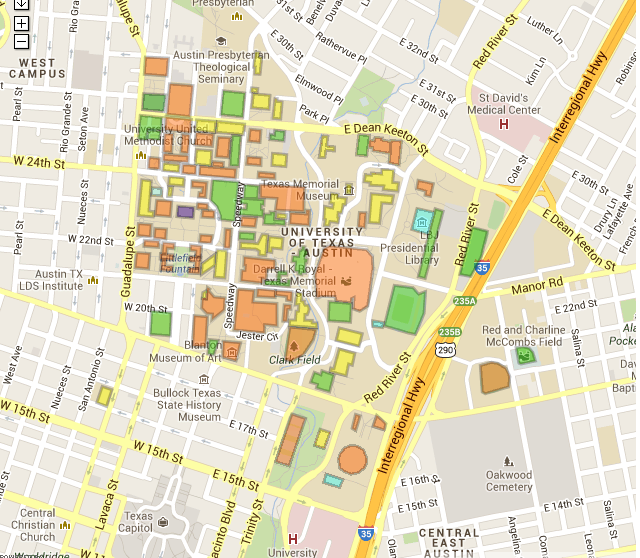When I arrived at work on Monday, I performed tasks as usual, including monitoring our Twitter feed to promote any articles that were pertinent to the clientele that we serve here at the Architecture & Planning Library. However, with the commencement of Open Access Week 2013, I was particularly searching for commentary that reflected the importance of open access in research. That’s why when my eyes skimmed over the following 140-character headline, I couldn’t click the associated link fast enough:
Hours of research went into this one — UT is naming more buildings after donors, less after faculty than ever before: http://bit.ly/1azwbsh
The above is a feature by The Daily Texan‘s Bobby Blanchard, and one that was immediately captivating, largely because of its relevance to architecture as a viable tool for marketing and promotion.
Though the topic is certainly contentious, Bobby’s article highlights just how much information can be extracted from sources that are openly accessible to the public. I briefly messaged Bobby to see where he obtained most of his information, and he referred to the Texas Exes website and subsets of the University of Texas at Austin site. He also checked out a book from PCL – Brick by Golden Brick by Margaret C. Berry (also available in our Reference Collection here at the Architecture & Planning Library) – to piece each building together into a cohesive collection. It’s incredible that the digital connectivity in our world – a connectivity that is almost passive because of its prolific nature – can give us the ability to gather a conclusive set of information and, in turn, create a new set of data that becomes readily accessible as well.

Though most of Bobby’s digital resources were not scholarly publications on an open access platform, his findings give insight into how digitally accessible information has the potential to be monumentally influential in the field of research. Bobby’s article could easily serve as an excellent base for an intensive research venture focused on how philanthropy affects college campuses across the nation, and lead into comparative studies between public and private institutions. The ability for this information to be presented in an online article that can be accessed with the click of a mouse across the world is a staggering thought, a modern-day ability that would have only existed in a dream world no more than a few decades ago.
I firmly believe that the library in its most historic form will never become obsolete. And I fully recognize the inherent credibility issues with open-access platforms, which are displayed and discussed in another article by The Daily Texan. However, the overarching goal of open access research – “the practice of providing unrestricted access via the Internet to peer-reviewed scholarly research” (via Wikipedia) – is one that keeps up with our fast-paced, time-restrictive, and increasingly digital world. With Bobby’s article as a student example, information that’s a click away has the potential to spur research that affects myriad disciplines across the world.
You can access Bobby’s original article here.
If you’re a Twitter-a-holic like the rest of us, you can follow Bobby at @bobbycblanchard and The Daily Texan at @thedailytexan.
The University of Texas Libraries are only halfway through their week-long celebration of Open Access! Find out which campus events you can still attend here.
Interested in learning more about the history of the UT campus? Titles with content similar to Brick by Golden Brick include The Texas Book, The Texas Book Two, and The University of Texas at Austin: An Architectural Tour.
